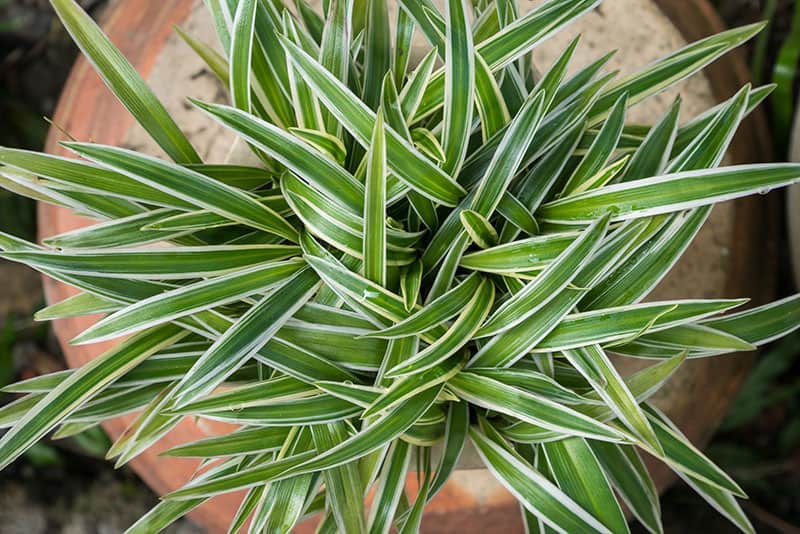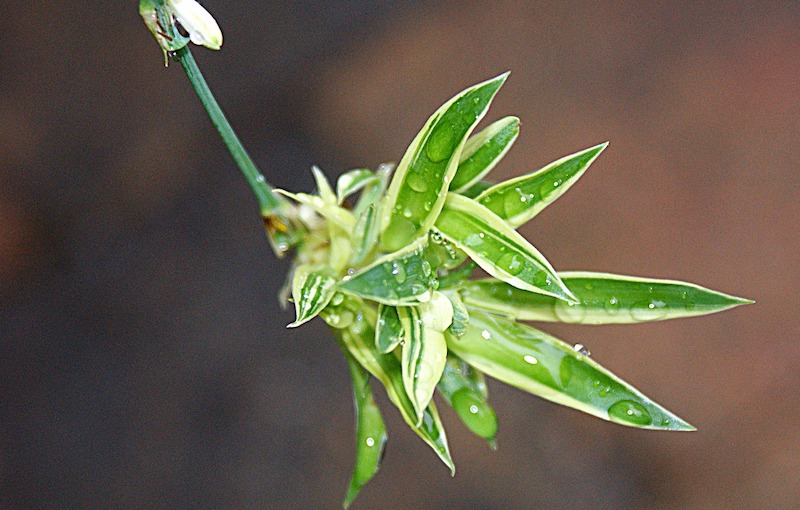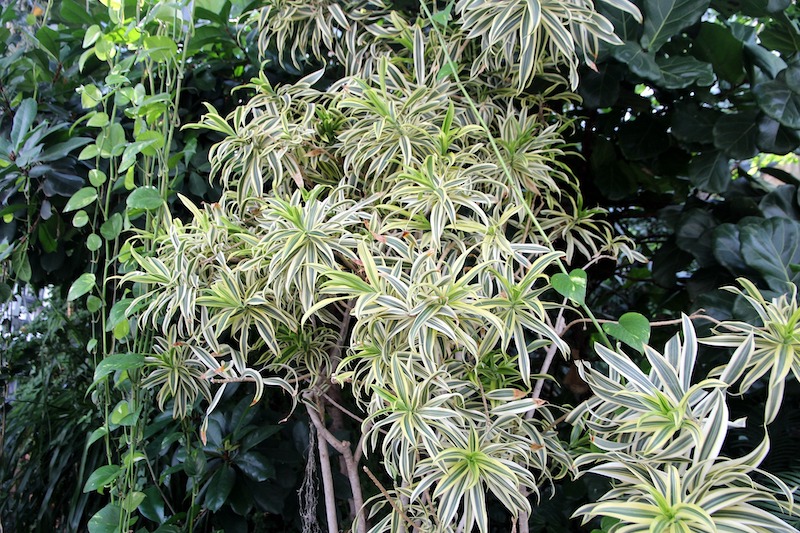Growing Spider Plant
Spider plants are one of the easiest houseplants to care for. Known as Chlorophytum comosum, spider plants are native to regions in Africa, where they act as vigorous groundcovers growing 10-24” tall. Spider plants are popular for their spider-like appearance with numerous thin, arching leaves and long, drooping scapes bearing plantlets. The leaves of spider plants can be entirely green or variegated with white. They are well known for their unique ability to propagate themselves, creating an abundance of spider plants to share with family and friends. Looking after spider plants is simple, as they are fast-growing and low-maintenance indoor plants.

Spider Plant Sunlight Requirements
Although they are adaptable to a variety of light conditions, spider plants do well in medium to bright indirect light, such as that provided by east-facing windows. Spider plants can even tolerate the lower light levels that north-facing windows provide. Avoid placing them near windows with direct afternoon sun exposure. Spider plants are sensitive to direct sunlight, which results in burning of leaves. Be sure that spider plants receive proper, consistent light to initiate blooming and plantlet production. This is especially important as light levels change seasonally. Spider plants also retain their color and variegation better when exposed to adequate light levels.
Planting Spider Plant
Spider plants thrive while being root-bound and should be planted in pots just slightly larger than their root system, about 1” wider in diameter. Due to their quick growth, spider plants should be repotted every 1-2 years. Use a well-drained potting mix with a neutral to somewhat acidic pH. A peat-based potting mix formulated for houseplants works well, with the addition of perlite or sand for drainage. Spider plants do best when planted in hanging baskets, which allows their offshoots to cascade down. Be sure that the pot has drainage holes to prevent waterlogging.
Watering Spider Plant
Water spider plants when the soil is completely dry. During the active growing season of spring and summer, spider plants should be watered about once a week or every other week. As growth slows down in the fall and winter, reduce watering. Water spider plants enough to moisten, not saturate, the soil. Overwatering may cause root rot; spider plants have fleshy tubers that are able to store water. Underwatering presents itself as droopy leaves that fold into themselves, rather than their usual flat appearance. Avoid using tap water to irrigate your spider plants, as they are sensitive to the fluoride and chlorine present in much of municipal water. Humidity is also helpful – regular misting or a humidifier will suffice.

Fertilizing Spider Plant
Spider plants benefit from fertilization. A well-balanced fertilizer will lead to lush, fuller growth with more vibrantly colored leaves. Fertilize spider plants once per month with a granular, low-strength fertilizer. Spider plants should only be fertilized in the spring and summer. Be careful not to over-fertilize, as doing so may lead to brown, dry leaf tips. Look for a fertilizer formulated for houseplants for best results.
Common Spider Plant Problems
Brown or yellowing leaves of spider plant are often caused by under or overwatering. Check the moisture level of the soil and make adjustments to the watering schedule. If the leaf tips are brown, it is usually a sign of build-up of salts from fertilizer or tap water. Dry air is another cause of dry, brown leaves. Keep spider plants away from heat sources such as radiators and vents, and use a humidifier if needed. Pinch off all brown leaves. Spider plants are susceptible to pests such as aphids, spider mites, scale, and mealybugs; use horticultural oil to get rid of the pests. It is also common for spider plants to stop blooming, which is required for plantlet production. Spider plants are more likely to bloom if rootbound. Plant your spider plant in a snug pot and allow time for it to grow while exposing it to sufficient light.
Propagating Spider Plant
Spider plants can be easily propagated from the plantlets produced by the main plant. Check for small, white flowers at the end of the descending scapes. Once fertilized, these flowers produce plantlets – tiny spider plants with adventitious roots. In their natural environment, these plantlets would reach the ground and set root in the soil. To propagate, simply cut off the entire plantlet from the scape once roots have developed about an inch in length. Plant it in moist, well-drained soil. Less commonly, spider plants can also be divided. Remove a large spider plant from its pot and clear the soil from its roots. Use a clean, sharp knife to separate the roots into smaller sections, with leaves and tubers attached. Repot each division.

Growing Spider Plant Outdoors
Spider plant can be grown in the ground as a perennial in USDA zones 9-11. It will form a dense groundcover as it propagates itself abundantly. In colder zones, spider plants can be taken outside during the warm summer months. They look great when hanging from a shady porch. Keep your spider plants in light shade, out of direct sunlight. Spider plants thrive in temperatures ranging from 70-90°F with regular rainfall. They should be watered weekly or more in particularly dry conditions with low humidity. Take care to acclimate your spider plants to the higher light levels outside.
 |
Lauren Youngcourt - Published 03-02-2023 |
